

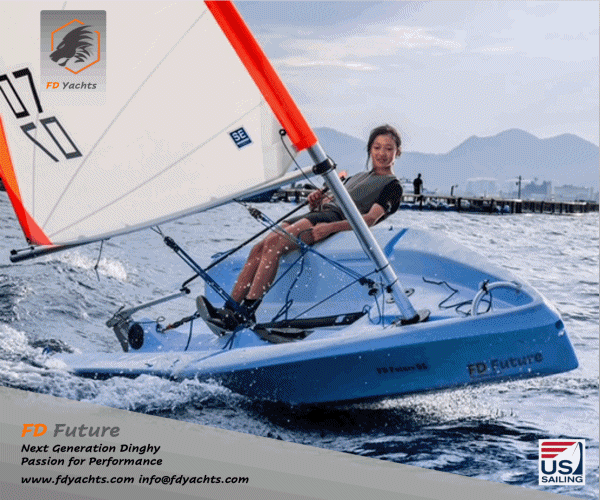


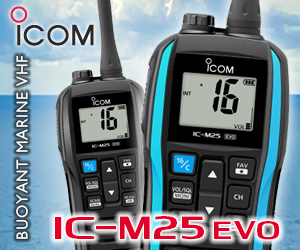





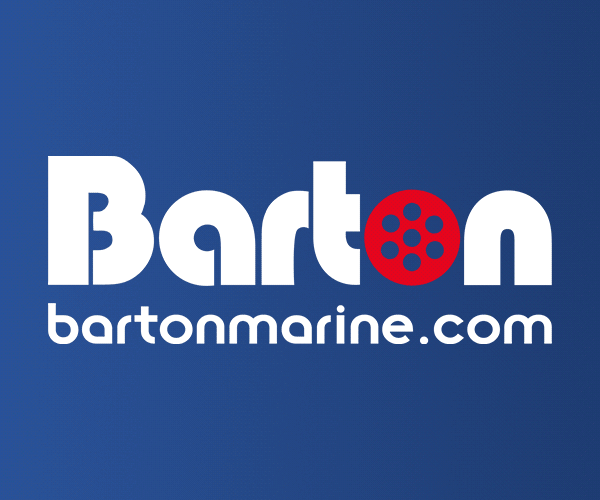

Boats for sale
| Rossiter Pintail Mortagne sur Gironde, near Bordeaux |
 |
| Bruce Roberts classic 45 Valencia, Spain |
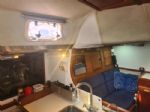 |
| Free mast for Merlin Rocket - has a bend! Guildford |
 |
List classes of boat for sale |
Asymmetrics - Luffing to the point of capsize? |
Post Reply 
|
Page 123 6> |
| Author | ||
Quagers 
Far too distracted from work 
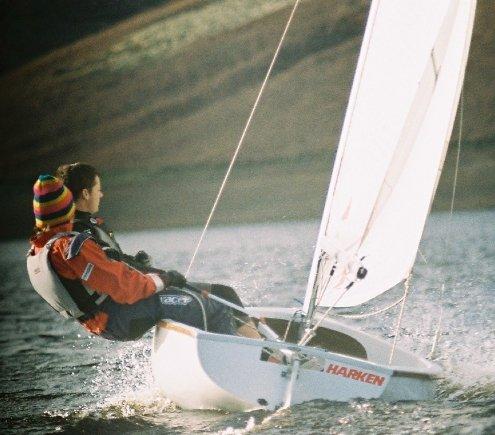
Joined: 24 Oct 06 Location: United Kingdom Online Status: Offline Posts: 279 |
 Post Options Post Options
 Quote Quote  Reply Reply
 Topic: Asymmetrics - Luffing to the point of capsize? Topic: Asymmetrics - Luffing to the point of capsize?Posted: 08 Jan 13 at 8:41pm |
|
|
I think there is quite a big movement to stamp that out at the moment, obviously its a nightmare for race organisers with all the damage it causes. In the last couple of events I've done we have been warned off making contact to prove a point specifically in the umpires briefings. Although it's obviously still prevalent at the highest levels, which I guess is a problem in a lot of sports though.
|
||
 |
||
Stuart O 
Really should get out more 
Joined: 22 Jul 07 Online Status: Offline Posts: 514 |
 Post Options Post Options
 Quote Quote  Reply Reply
 Posted: 08 Jan 13 at 10:33am Posted: 08 Jan 13 at 10:33am |
|
|
I know when we were MR that we were taught to luff until contact that and many in the IMRC still do, and it then goes down to speed of luff, ie did they give enough time for W to respond. For some reason MR umpires do like to hear the sound of grinding FRP

|
||
 |
||
Quagers 
Far too distracted from work 

Joined: 24 Oct 06 Location: United Kingdom Online Status: Offline Posts: 279 |
 Post Options Post Options
 Quote Quote  Reply Reply
 Posted: 08 Jan 13 at 9:58am Posted: 08 Jan 13 at 9:58am |
|
That's the way to do it, as a RoW boat pushing a situation to contact is always risky. If there is no contact the worst it'll be for you is green flagged. We have such a hard time trying to get this across to new team racers.
|
||
 |
||
sargesail 
Really should get out more 
Joined: 14 Jan 06 Location: United Kingdom Online Status: Offline Posts: 1459 |
 Post Options Post Options
 Quote Quote  Reply Reply
 Posted: 07 Jan 13 at 9:49pm Posted: 07 Jan 13 at 9:49pm |
|
Just plucking rough numbers out of my head but I'd say that at the level I see (UK uni circuit) 50% of luffs result in contact/protests (especially on starts or down the run). That means that in TR 25% of all luffs have a 16.1 element, I'd say that's pretty large! As a point of interest when I first started TR from fleet racing I used to always assume the windward boat was wrong in a luff with contact unless it was very very obviously otherwise. Nowadays though I find I am almost watching the leeward boat more than the windward (not quite but close). [/QUOTE]
So 75% have no 16.1....that's a hefty majority! I'm not altogether surprised to see that the % of luffs with contact is higher in Uni Team Racing than in the service and other stuff I do....probably also builds a picture of why the 16.1 figure is also high.... I find that I get most calls when I luff, stop, make mu point anout keeping clear, and then either luff again, or go straight to red.
|
||
 |
||
Quagers 
Far too distracted from work 

Joined: 24 Oct 06 Location: United Kingdom Online Status: Offline Posts: 279 |
 Post Options Post Options
 Quote Quote  Reply Reply
 Posted: 07 Jan 13 at 9:39pm Posted: 07 Jan 13 at 9:39pm |
|
I don't disagree with (almost) any of this, my comments and interpretation were purely to do with the situation we were talking about which was an aggressive luff from L immediately causing W to capsize. If L is not changing course (or has not very recently) then she is in no danger of protest at all.
Just plucking rough numbers out of my head but I'd say that at the level I see (UK uni circuit) 50% of luffs result in contact/protests (especially on starts or down the run). That means that in TR 25% of all luffs have a 16.1 element, I'd say that's pretty large! As a point of interest when I first started TR from fleet racing I used to always assume the windward boat was wrong in a luff with contact unless it was very very obviously otherwise. Nowadays though I find I am almost watching the leeward boat more than the windward (not quite but close).
|
||
 |
||
sargesail 
Really should get out more 
Joined: 14 Jan 06 Location: United Kingdom Online Status: Offline Posts: 1459 |
 Post Options Post Options
 Quote Quote  Reply Reply
 Posted: 07 Jan 13 at 8:00pm Posted: 07 Jan 13 at 8:00pm |
|
Quagers - you've missed or ignored the thrust of RS400s point....he's using the proper course as an illustration of the flaw in applying the MR Call in Fleet racing.....let me take this on a little further to explain. Let's imagine that L luffs, W successfully keeps clear and then is capsized by a gust or a wave, or a pure error, after L has stopped changing course.....surely you would not argue that that is L's infringement under 16.1? And equally I think that if half the L's with contact go against the leeward boat in Team racing then that illustrates that in 50% of cases 16.1 was not a factor....which means that (since the vast majority of luffs don't end with contact or a protest call), that in the vast majority of luff situations 16.1 is not a factor. It amazes me that we are still in a corrective phase in this one....when the rule changed the interpretation went too far...and we are still getting people using it as a defence when they get too close to a leeward boat. For W to have kept clear L must be able to alter course in either direction without making immediate contatct with W. There is no limit to the size of that luff within the rules (less for 16.1) - so if you are passing to W and L can achieve immediate contact then W should be out.
|
||
 |
||
Quagers 
Far too distracted from work 

Joined: 24 Oct 06 Location: United Kingdom Online Status: Offline Posts: 279 |
 Post Options Post Options
 Quote Quote  Reply Reply
 Posted: 07 Jan 13 at 2:49pm Posted: 07 Jan 13 at 2:49pm |
|
|
Proper course is only relevant for R.17 (if they are allowed to luff or not) as long as the RoW boat is changing course, regardless if it is to sail her proper course she must give the windward boat space to keep clear.
All of this discussion only applies if a leeward boat is changing course (eg. luffing) it the windward boat has simply burned over the top then got themselves in trouble without leeward changing course then its all on them. As for the particulars of that call, it is simply a match racing call and applies whenever appendix C is in force completely independent of the boats being sailed. Having said that obviously most MR is done in keel boats so that is where the focus is. But the rules and principles do not change just the time and space needed as boats and conditions change.
Edited by Quagers - 07 Jan 13 at 2:50pm |
||
 |
||
RS400atC 
Really should get out more 
Joined: 04 Dec 08 Online Status: Offline Posts: 3011 |
 Post Options Post Options
 Quote Quote  Reply Reply
 Posted: 07 Jan 13 at 12:18pm Posted: 07 Jan 13 at 12:18pm |
|
|
How would the umpires call way of looking at things work if the leeward boat was not luffing, but merely sailing her proper course?
Perhaps on a different leg, or the course is really too tight for the kite anyway? What class is the umpire's call from? To me, it would make a lot more sense match racing in keelboats than handicap racing in RS800's. In a keelboat, space to take the kite down is space for it to blow out sidewise, not room for a big bear-off. |
||
 |
||
Quagers 
Far too distracted from work 

Joined: 24 Oct 06 Location: United Kingdom Online Status: Offline Posts: 279 |
 Post Options Post Options
 Quote Quote  Reply Reply
 Posted: 05 Jan 13 at 10:15pm Posted: 05 Jan 13 at 10:15pm |
|
|
To all those people who are saying "Common sense says you don't pass that close to windward of a non assy boat" etc. etc. While that may be true common sense has absolutely no bearing on the rules, it is only the words as they are written that matter. Also it is important to remember that the rules do not require you to anticipate another boats actions in any shape or form.
For example, if you are overtaking to windward you must leave enough space to 'keep clear' of them (allow them to alter course in either direction without immediately causing a collision) You are under absolutely no obligation to anticipate that they will luff, even if its the most obvious thing in the world, even if they shout that they are going to! Until they actually alter course you do not need to do anything more than keep clear. Once they do alter course you must continue to try and keep clear but they must give you time and space to do so, and that time and space is completely dependant on the conditions and the characteristics of the boats. I think people often forget just how limiting R16.1 is, I'd say in almost 50% of luffs I see in team racing which result in contact it goes against the leeward boat.
While I don't think it can be directly applied I think you can take from it the intention of the rules. After all it tells umpires how to rule in this situation and even in match racing (in this case) they are governed by the same rules. It clearly shows that the definition of room to keep clear should take into account sail handling which is very applicable in this case.
Edited by Quagers - 05 Jan 13 at 10:26pm |
||
 |
||
sargesail 
Really should get out more 
Joined: 14 Jan 06 Location: United Kingdom Online Status: Offline Posts: 1459 |
 Post Options Post Options
 Quote Quote  Reply Reply
 Posted: 05 Jan 13 at 9:03pm Posted: 05 Jan 13 at 9:03pm |
|
|
And I don't think the MR call has any cross relevance....it's an Umpires Call, no more no less.
|
||
 |
||
Post Reply 
|
Page 123 6> |
| Forum Jump | Forum Permissions  You cannot post new topics in this forum You cannot reply to topics in this forum You cannot delete your posts in this forum You cannot edit your posts in this forum You cannot create polls in this forum You cannot vote in polls in this forum |
Bulletin Board Software by Web Wiz Forums® version 9.665y
Copyright ©2001-2010 Web Wiz
Change your personal settings, or read our privacy policy
Copyright ©2001-2010 Web Wiz
Change your personal settings, or read our privacy policy












 Printable Version
Printable Version Delicious
Delicious Digg
Digg Facebook
Facebook Furl
Furl Google
Google MySpace
MySpace Newsvine
Newsvine reddit
reddit StumbleUpon
StumbleUpon Twitter
Twitter Windows Live
Windows Live Yahoo Bookmarks
Yahoo Bookmarks Topic Options
Topic Options